[Tom Zinnen, Outreach Specialist, Biotechnology Center, University of Wisconsin-Madison]
Welcome, everyone, to Wednesday Nite @ the Lab. I’m Tom Zinnen. I work here at the UW Madison Biotechnology Center. I also work for UW Extension Cooperative Extension, and on behalf of those – those folks and our other co-organizers, Wisconsin Public Television, the Wisconsin Alumni Association, and the UW Madison Science Alliance, thanks again for coming to Wednesday Nite @ the Lab. We do this every Wednesday night, 50 times a year.
Tonight, it’s my pleasure to introduce to you Jennifer Stenglein. She’s with the Wisconsin Department of Natural Resources. She grew up in Wooster, Ohio, and went to Grove City College in Pennsylvania. Then she went to the University of Idaho, which is in – Moscow. And eight miles from – Pullman in Washington. They’re the two closest land-grant research universities in the country. And then she got her master’s there, and then she came to UW Madison to get her Ph.D. in wildlife ecology. She’s been with the Wisconsin Department of Natural Resources since December of 2013.
Tonight, she gets to talk with us about something that’s near and dear to all our hearts, and that is wildlife, particularly the kind that’s out in the woods and particularly the kind that you can take pictures of. This is a great citizen science project that you can help with from the comforts of your own home at your own computer. I’m looking forward to seeing and getting a better picture about wildlife here in Wisconsin. Please join me in welcoming Jennifer Stenglein to Wednesday Nite @ the Lab.
[applause]
[Jennifer Stenglein, Research Scientist, Wisconsin Department of Natural Resources]
Thank you so much. Thanks for everyone being here and any people that are going to watch this later.
This is – I’m really, really grateful to be here to talk about Snapshot Wisconsin. It is such a cool project. And I’m so fortunate to work on it. I’ve worked on it since its beginning and when I started, I suppose, in December of 2013 at Wisconsin Department of Natural Resources.
And as you can see on this first slide here, we have lots of partners on the project. The first and foremost is the UW-Madison. They have helped us get this project off the ground. And you’ll see we’re still getting it off the ground through a large N.A.S.A. grant. So, we’ve partnered with them, and some colleagues in Forest and Wildlife Ecology have really helped take the lead on getting that grant and helping us get this project up and running. That extra funding has really, really helped us out, and just the extra support that University of Wisconsin Madison provides.
You’ll notice a list of lots of other people who’ve been instrumental so far. There’s so many more to come as well. Another batch of a – a group of folks that we are very close to on this project is Zooniverse, and we’re really grateful to our volunteers all across the world. We have more than 3,000 of ’em that are helping us classify photos, maybe this very second, and that’s – thats just been an amazing community, and we could not get through all the data we have if it weren’t for that organization.
And, also, our trail camera monitoring volunteers, so theres, which you’ll see, there’s more than 250 of those across Wisconsin now. People who volunteered their time to come to a training session, take our equipment, and put it out on their own private land, and then periodically check those cameras for the wildlife, submit that information to us, and then that’s how we get the – all the photos that we have. So, a big thanks to all of those people as well.
As you can see, as most projects are, this is a big effort. I think ours is unique in all of the citizen scientists that we need in order to keep this project running.
So, what I want to do today, this evening, is take you through the story of Snapshot Wisconsin, and the story is still pretty young, which I think makes it extra exciting. So, we’re going to go talk about the goals, the beginnings of the project, the status currently, and how we are using the photos and anticipate using the photos in the context of both populations of animals and individual animals.
So, to start with, the goals of Snapshot Wisconsin, and unless you see otherwise, any photos that are used are Snapshot Wisconsin photos in this presentation.
Well, our – our tag line of the project is: Let’s discover our wildlife together! And it truly is a partnership to monitor wildlife year-round through this statewide network of trail cameras. So, what I have shown you here is the Wisconsin Department of Natural Resources logo, and it’s important to keep that in mind. This large citizen science effort with trail cameras is unique among other large trail camera efforts. Maybe some others you may have heard about, eMammal is a popular one.
It’s unique because it is really run by the agency, by the state of Wisconsin. And that sets it apart because the purposes of the project are for wildlife decision-making. So, really, the information we’re gathering, we’re then turning back to try to understand what is a population estimate of – of deer or of wolves in this state, and how does that turn into maybe a conservation need or a hunting quota? So – so, yeah, I think it’s important to keep in mind that this is a W.D.N.R. project. Even though it’s called Snapshot Wisconsin, we have a lot of these other partners.
So, this is kind of our – our general idea of what we’re doing. It’s mainly divided into two goals. The first goal has to do with increasing our understanding of wildlife in Wisconsin. And I’m going to take you through this goal in detail on this slide. So, on the left-hand side, you see a map of Wisconsin divided into a bunch of grid cell survey blocks. These are quarters of townships. They’re, on average, nine square miles. There’s 6,273 of them in the state. Our goal is to have a trail camera in every single one of those survey blocks. [laughs] We’re just starting, though. And what that’ll get us is the best picture yet we have of wildlife.
We have a lot of different ways we monitor wildlife populations, we as – as the Department of Natural Resources. Oftentimes these methods are just for one type of wildlife. We, you know, will do a track survey or have the – the winter tracking survey for wolves. That’s primarily for wolves. We’ll have, you know – run transects for otter tracks, and that’s primarily for otters. What this gets at is a way to monitor all types of wildlife. And so, it can be really cost-effective that way.
Another thing that you just see by seeing the whole state there is it’s for the full extent of Wisconsin, whereas a lot of the methods we use, especially for furbearers and – and bobcats and things, are in the northern third of the state only, and so we don’t have a lot of information in the southern two-thirds of the state. So, we’ll have information statewide.
And then, another thing to point out is the actual tool that we’re using and how that gives us a unique picture for wildlife monitoring. And that tool is the trail camera. A lot of you are probably familiar with those by now, but just in case you’re not, they will take a motion-triggered photo any time anything goes by it. Anything from a flying squirrel, or even a tiny little mouse in some cases, all the way up to elk that we have and maybe the occasional moose. So, they don’t discriminate. They take a picture even of blowing leaves. Anything that’s moving in front of the – the motion activation area of the camera.
And they take pictures all throughout the day. So, if we had a bunch of citizen scientists standing in the woods to help us monitor our wildlife the same sort of way, we’d only get the information during daytime at best. And these cameras give us the information from nighttime as well. You’ll notice the nighttime photos are all in black and white. The – the top part of the camera here is – is a bunch of infrared lights. And this is a red infrared – it’s an infrared flash that appears red if you’re staring straight at it. And what that allows the flash to be a little more cryptic, so it doesn’t scare the wildlife, but it also just results in these black and white photos. But they’re – theyre – theyre pretty good.
In summary, the – the wildlife goal of this project is to increase the spatial and temporal resolution for all types of wildlife monitoring to give us one consistent way to do this. In time, we hope that as this – as we really ramp up and get throughout much of the state that this will be a way for us to replace some of the current monitoring that may be more costly.
The second goal is to involve people in this process. And it truly is a joint goal of this project. It started out that way, and it’ll always be that way. This is a term I like: people-powered research. That actually comes from Zooniverse. And we have two main types of people-powered research that’s going on, citizen scientists.
On the left-hand side, on the upper photo, you can see one of our training sessions from Iowa County. So, these are our trail camera volunteers that have volunteered to put out a trail camera on their own property. And they come to this training session, we give them equipment and all the tools that they’ll need to keep that camera up and running.
[indicating lower left-hand picture on the slide]
And here’s a picture of one of our educators showing checking the camera there.
So that’s – thats huge. Having people out on their own property, getting us this information all the time.
And then the second set is on the right-hand side of the page there, and that’s Zooniverse. That’s the crowdsourcing. So, these photos that are collected by volunteers go then to this crowdsourcing site where thousands of people from all across the world help us determine what’s in them.
And that’s a big effort because its – part of this crowdsourcing is having multiple people weigh in on what’s in a given photo until we get to a consensus. And that’s good because one – if one person’s wrong, it’s not a big deal. The photo just stays on the site until a consensus is gained, and then it’s retired off the site, and then we get that information and are able to use it. It’s pretty detailed information. It’s about how many adults, if young are present, in some cases if radio collars are on the animals, and if there’s multiple species in the photo, and even behaviors for some of the deer.
All right, so those are the two main goals of the project, and we’ll go straight now into the Snapshot Wisconsin beginnings. If you don’t see in this photo, there’s a badger peeking in on the left-hand side here. And this is pretty cool. We don’t get photos of badgers too often.
The project – the main funding of the project comes from Pittman-Robertson dollars. This comes from 1937. It’s called the Federal Aid and Wildlife Restoration Act, when Senators Pittman and Robertson, during FDR’s presidency, passed this legislation. And what it does is gives an excise tax on the purchase – purchase of guns and ammunition. It’s, I think, 10% or 11%.
In 1970, this was even updated to include archery equipment as well. And that – that money then goes to the federal government and then is allocated back to the states, depending on how big the state is and how many hunting licenses a state has. And that money is meant for wildlife restoration and has to be put towards wildlife restoration, health, wildlife health, wildlife research, endangered resources, hunting safety classes, and a – a – a somewhat restricted suite of conservation activities that have to primarily do with wildlife.
That’s been an amazing source of income for states to do great restoration, including it had a big place in getting the deer numbers – the – the whitetail deer numbers back up. Also, wood duck numbers, and I’m sure a host of other species.
Something interesting has happened in recent years, though, and some people call it the Obama Bump. And President Obama’s gun control legislation has resulted in a huge increase in gun and ammo sales. And that then has resulted in a huge increase in these Pittman-Robertson dollars. That’s the Obama Bump. To the tune of two and three times, annually, what the states have been used to getting. So, the states have been used to sort of operating on this base amount for many decades, and all of a sudden there’s this just giant – just very large increase in those dollars. And that’s an opportunity then to do some new, exciting things, and that’s the primary funding for Snapshot Wisconsin.
The second part of the Snapshot Wisconsin beginnings goes to the deer trustee. So, in Governor Walker’s – when he was still a candidate for the position, in 2010, promised to bring on a deer trustee to review the Wisconsin deer management system. And I think still in 2010, or maybe 2011, by executive order, he assigned James Kroll or appointed James Kroll to this position. Where James Kroll then is from Texas, and he came up with this Deer Trustee Report through help with the public to try to understand the Wisconsin deer management system, how to make it better for the health of the herd and also for hunters. And that was – that ended up being what we call the Deer Trustee Report, which has more than 60 recommendations in it, and some of them were implemented as – as soon as 2014. And if you’re – if youre familiar with deer management, you may have noticed some of those changes, a big one being there were deer management units that we were probably more familiar with that were kind of smaller, and now that system, the deer management units, have gone to the county levels instead. So, that’s maybe one of the most notable came out of that Deer Trustee Report.
Well, there were five recommendations in the Deer Trustee Report that – that really helped us get Snapshot as – as an approved project, and those are written here. The first two have to do with a goal of citizen science, and the last three have to do with that goal of wildlife monitor – monitoring.
So, the first is increasing citizen involvement in wildlife monitoring and – and paired with that, creating better relationships between the department and the citizens of the state. And then the others, assessing a statewide distribution of carnivores, or, as it’s phrased, most often the predators of deer, developing new methods to monitor deer populations, which we typically call deer metrics, and having a more proactive and innovative research program. I have to argue you can’t get more innovative than 6,000 trail cameras across the state when it hasn’t been done before. So, this was the – the other piece of the framework. This was the framework for getting Snapshot Wisconsin implemented. And, like you saw before, the money came from Pittman-Robertson – Robertson dollars.
I also should note for sure that we have that help from UW-Madison through that large N.A.S.A. grant that’s been instrumental as well. But here’s the formula for Snapshot Wisconsin. And we do get asked by other states, How – how do you do this? We want to do it too. And it seems like, in a lot of ways, the stars just aligned for this to happen for us.
Okay, on to the status of Snapshot Wisconsin.
We currently have more than 250 volunteers monitoring trail cameras across the state. In the map, if you can see the green blocks, those are the survey blocks where we have volunteers monitoring cameras. And there’s more than 500 cameras deployed. The reason there are more cameras than volunteers is because these two zones here –
[indicating large concentration in Jackson County]
– you can see there’s just a huge cluster and they’re all tightly grouped. That’s Jackson County, and this is the reintroduced elk herd. And so, we have an extra effort there where the cameras are put more densely together and volunteers helping us to monitor those cameras. And, similarly –
[indicating large concentration in northwest Wisconsin]
– this is the existing elk herd up in Clam Lake at the junction of Sawyer, Bayfield, and Ashland Counties, and also for monitoring the elk herd where the cameras are spaced a little bit more closely together. But otherwise, in all these other blocks, there’s one camera. And we have open enrollment, meaning anyone who has land in these counties is welcome to apply. Currently, in – we started in Iowa and Sawyer Counties. So, you can see how there’s kind of a concentration of cameras there. We’ve opened fairly recently in the rest of Jackson County, and then up in Iron County and Manitowoc and Waupaca Counties. And those don’t have the clusters of cameras quite yet because we – we just had our first training sessions these last three weeks in those counties. And, finally, what we have coming up next is Dodge, Racine, and Vernon. So, we really are kind of rolling out this project county by county so we can get a density of information that will be useful for us for wildlife monitoring purposes.
You’ll also see this scattering of other green blocks throughout, and those are educators. So, we’re enrolling educators statewide. And that’s been very, very cool because we get to see the student involvement very early on in the project.
And it’s been very helpful to understand why volunteers are participating in our project. What this is, is just showing – well, first off, it’s a partnership again with UW-Madison. A Ph.D. student, Christine Anhalt-Depies, has shared this with us, and she is giving a survey out to our volunteers at the training sessions and asking them, among other things, their top reason for participating. So, that’s the Wordle you see on the left-hand side, and it mostly has to do about this curiosity about wildlife on their own property as well as partnering with the D.N.R.
And, in the quotes that we see from volunteers when answering this survey, those two-theme come through. So, the blue are of that one theme. I want to know what is on my land. I’ve always wanted a trail camera. Curiosity. Wanting to see what animals traverse my property. I love seeing pictures on trail cameras and what wildlife is in the area. And the second theme about partnering with the D.N.R. is in green. Volunteer helping our state’s natural resources to highlight wildlife in our area. To hopefully aid the D.N.R. and public in understanding wildlife populations more accurately. And: To contribute to a better understanding of wildlife in my county and ways to protect it.
So, this has been really valuable to learn this early – very early on in the project. The – you just saw the status on the last slide. We’ve only been enrolling volunteers since April of this year. So, the project really has ramped up quickly, and it’s good for us to know this so we can work on volunteer retention, which hasn’t been an issue so far, but we just haven’t been in the project yet for too many months.
And I mentioned this a bit a little earlier, but I’ll go through it again. There are these two main ways to participate in Snapshot Wisconsin. The first is to host a camera within a survey block. And the D.N.R. then, we train the volunteers and give them the set of equipment that you see in the right-hand side there. It’s a trail camera. It’s two sets of rechargeable batteries, a battery charger, two SD cards, and a mounting device. And this, the cost of that equipment for that kit comes to about $150.
And then we also give each volunteer access to their own personalized website where they can enter their information, view their own photos, and classify their photos.
And the second way is to classify the animals in photos at SnapshotWisconsin.org, and that’s this community of more than 3,000 volunteers right now.
This is something that we go through at our training sessions and – and can be helpful to kind of understand the guts of the project. A lot of planning has gone into Snapshot Wisconsin to get it off the ground. It’s been very intentional so that the project is meant entirely for wildlife monitoring and not at all for monitoring of people. That’s been a very big distinction. So, I’m going to take you quickly through this life cycle of a Snapshot Wisconsin photo. Our trusty volunteer there is in the Green Bay Packer hat. And you can track what the volunteer does as well as what a Snapshot Wisconsin photo goes through.
So, the volunteer has all the tools they need to set up a trail camera. The cameras are specially programmed by Bushnell. Bushnell is where we get them from. And they’re programmed to only require you to set the date and time. All of the other functions are already in the camera. They take three pictures per trigger, wait 15 seconds between trigger events, take one time-lapse photo at 10:40 A.M. every day. All the volunteer has to do is set the date and time and turn it on. And that helps us with consistency.
Another big thing is they actually take encrypted photos. So, somebody can’t come up to the trail camera that’s not meant to and then take the SD card and see what’s on it. And that’s for privacy protection, to make sure people aren’t getting their pictures taken and that information gets out. The volunteer then retrieves those encrypted photos. Then they go back home and upload those photos to the D.N.R. through this little program that is on – that we place on the SD cards. They literally just double click on it and all the photos go up to this F.T.P. site. Then at D.N.R., in step five here, just this automated process. So, nobody’s looking at these. They just go through this processing. They’re decrypted, and then the photos go to Microsoft Computer Vision to be automatically checked for humans. And the photos go one by one, and they’re – theyre given a tag. And the ones that say something like man in the woods, those are removed as human photos automatically. And we remove anything that looks like or that has a vehicle tag in – in the name as well.
Then the photos go onto the personalized MySnapshot site. So, this is back with the volunteer. The volunteer is the first person to see their own photos, even though they go through this decryption first. And then we ask the volunteer to check for humans a second time, flag anything that looks like a human. Then those photos go, the ones that aren’t human and ideally not blank as well, will go on to the crowdsourcing site, which we call Zooniverse most of the time here. That’s where people from around the world are gonna all classify the same photo until we get a consensus. The photos are classified between seven and fifteen times. Usually, the average is probably more like seven times.
And then, back at D.N.R., we get this information, and the photo classification is finalized. We store that information, and then we use that information for wildlife monitoring. And I’ll show you that in just a second.
But first, we have to look at some of these amazing photos. [laughs]
[night vision photo of raccoon]
[photo of deer fawn]
We have more than three million photos that have already come in from Snapshot Wisconsin.
[photo of wolves]
[night vision photo of black bear]
And they all look just like this.
[photo of a fawn and doe]
It’s been really neat to see recruitment with fawn-to-doe ratios.
[night vision photo of an elk]
[photo of a wolf]
And we’ve had a lot of elk photos ’cause of our elk efforts.
[night vision photo of a fisher]
That’s a fisher, yup.
[photo of a doe]
[night vision photo of a rabbit]
You see that one? Yup.
So, we ask our volunteers to distinguish between cottontails and snowshoe hare.
[photo of eight otters in a bunch]
This one has surprised almost everyone we’ve shown, including furbearer experts, to see eight otters [laughs] running down this trail.
[night vision photo of raccoons]
Family of raccoons.
[photo of a doe in the mist]
And some pictures that just look like real art.
[night vision photo of a wolf]
[a dark photo of a bobcat]
It might be a little dark for some of these. The bobcat in the foreground on that one.
[night vision photo of a wolf]
[photo of a bird]
Now, birds aren’t our main focus here.
[photo of a bobcat]
We do definitely still keep track of them, though, and get some amazing bird photos.
[photo of a crane and two deer]
And it’s – its very neat when we get two species in the same photo. This has a sandhill crane and a deer. Two deer.
[photo of Canada geese]
[night vision photo of a badger]
[close up photo of a deer]
We get a lot of selfies, which are always favorites.
[laughter]
[night vision photo of a wolf]
[photo of a fawn]
[laughter]
[night vision photo of a large elk]
And sometimes animals decide to sit in front of the camera for five hours. Like this bull elk did.
[photo of a wild turkey]
[night vision photo of a bobcat]
[photo of a sandhill crane taking off]
[night vision photo of a doe and two fawns]
So, those photos are our data. And it’s incredible to go from – to go from that to how we can use those to understand wildlife populations better. So, that’s the step we’ll go into now, is using these photos.
I want to highlight the use of photos for phenology, which is something that our UW partners are really interested in and one of the primary reasons that they received that N.A.S.A. funding. These cameras are programmed to take one-time lapse photo every day at 10:40 A.M. And a time lapse photo means it’ll take that photo no matter what, and definitely doesn’t depend on an animal walking by at that time. What that does is it gives us a record of that site over – over time to understand things like green up and brown down and how that the timing of that may relate to wildlife and might relate to even survival of fawns if, you know, that timing’s not quite right.
So, we all know who this is: Aldo Leopold. And he was obviously very interested in phenology. And to just give you one of those quotes to tie it back. Many of the events of the annual cycle occur year after year in a regular order. A year-to-year record of this order is a record of the race at which solar energy flows to and through living things. They’re the arteries of the land. By tracing their response to the sun, phenology may eventually shed some light on that ultimate enigma: the land’s inner workings.
And Snapshot Wisconsin is truly meant to be a project that lasts years and years and years and years. So, even though these records will be interesting even just within a year, it’s really that long-term, for these time lapse photos especially, that we’re interested in, to really understand phenology, how it’s going to change over time and throughout the state as well.
So, to show you a picture of what this looks like greening up, I’m just going to minimize this and show you one of these sites greening up.
[showing time-lapse from one of the trail cameras]
So, this is the picture that’s taken at 10:40 every day, from about April until August when the camera was taken down. And it’ll just keep going through it, but if you focus on this tree over here –
[indicating tree branch on lower right of time-lapse]
– you’ll just see it burst with green all of the sudden. And our UW partners, one of the things that they’re working on is actually measuring greenness in these photos. And what they’re doing is taking each photo and counting the number of green pixels in, of course, an automated way to then get a measure of that greenness. And then they can track that greenness.
So, we do this for every – we take this picture for every single site. You’re only seeing about three months here, but for the other cameras that have been – the cameras are up year-round so we’re going to have a lot more information soon.
So, to talk a little bit more about this phenology piece, I’m going to bring in remote sensing, which is not my area of expertise. So, I’ll gloss over it just a little bit. But, luckily, our – the folks at UW I work with this is their area of expertise. So, the – the M.O.D.I.S. satellite goes over our area at 10:40 A.M., which is why we take that same – that picture at 10:40 A.M. So, their interest is really in kind of looking at the difference or similarity between the – the satellite version of things like greenness compared to our camera version of things like greenness and comparing them. And one thing I found interesting right away, this is a picture – its – it’s a little old now, but from Christmas and New Year’s from a couple of years ago. And at that time, I had remembered both those days were incredibly overcast. And this is the M.O.D.I.S. picture from those days, and you get no data for Wisconsin because it’s completely cloudy. But on those days, we do get information from our trail cameras because it’s not affected by the clouds.
So, when looking at this comparison between the camera’s greenness and what we’re getting from remote sensing or the satellite greenness, here’s a – a graph that was produced by our UW partners for this. The photos that you saw running through in that play loop where you saw the greenness happening, those are the red dots. And that – so, those red dots are measuring the number of green pixels in – in the photos over time. And so, you take each one of those photos, measure the green pixels, this is when the greenness really happens. It happens really fast, as you can see, and then it kind of plateaus out.
And then the green dots here are the information of greenness from M.O.D.I.S. And you can see, in this case, those two really correspond nicely. And that’s actually been something that hasn’t really been done before. So, that’s already a pretty neat finding that those, there’s some correspondence there. And I know our UW partners are excited about that and even excited about the examples where they don’t agree because that means something different. The cameras are really picking up a very small area. It’s a very micro site look. But it might be more valuable to know that look when we’re trying to relate it to animal populations because it’s what animals are actually seeing and sensing and feeling rather than that very high up look that’s kind of much more aggregated.
Okay, so that was the use of photos for phenology. Now I’m going to talk about a use of photos for animal populations. This is going to that – that main goal of the project. It’s to understand how we can use cameras to help inform wildlife decision-making. And this is really the – the point, the reason I was brought onto the project. I have a background in modeling animal populations and population dynamics. So, this is a piece that makes a lot of sense to me even though we’re still pretty young in this process.
So, what we’re really looking at is trying to understand populations all across the state of Wisconsin. They’re arbitrary boundaries but that’s what we’re working with as an agency. And for something like, let’s see, what’s a good example? Bobcats are a good example. We have a lot of information in this northern part of the state here from track surveys and from trapping efforts and very little information in the southern 2/3 of the state. So, that’s what we’re hoping is that we can use trail cameras across the state to give us information about bobcats.
This is an example about fawn-to-doe ratios. So, every one of these photos has deer, has a doe or a fawn or both, in it from Iowa County in August. And what we typically do for fawn-to-doe ratios is ask people across the state to report their findings, what they see of any deer in August and September and take the number of fawns and the number of does and divide ’em and get a fawn to doe ratio. And that’s called Operation Deer Watch. And then we also have summer deer observations where we ask wildlife managers to do the same thing. Well, those are – are based only during the daytime and basically only on roadsides, as far as we can tell. So, we think photos will be a really good way to do this because we’re getting interior sites and we’re getting information from nighttime as well. But they’re also potentially biased because you have one camera at a site and you’re going to get the same doe or fawn or both walking by at multiple times all the time. It’s their home range, right? So, you can’t just keep counting those over and over. So, we do have some corrections to make, but we know this will be a promising method.
When we have very initially done this for Iowa County in August, we got an estimated fawn to doe ratio of .81, which is – is reasonable. So, we still have some more testing to do, but just a proof of concept that – that this is going to work and it’s going to be – its going to be a good way to use trail camera information and then this information is used to help estimate the deer herd every year in each county. And once we have an estimate of the number of deer in each county that plays into the quota settings of how many deer are harvested or – or how many permits are given out for deer harvest in each county.
Okay, so this is some examples from elk, and this is from up in the Clam Lake area at that junction of Sawyer, Ashland, and Bayfield Counties. The trail cameras give us a time and a date stamp and also a location. And what we can do is look at the relative sighting density. So, how many pictures of bulls, cows, and calves and other critters that we have in this same area to see kind of their spatial distribution. So, where you see the warmer colors, that’s where there’s more observations of bulls, say. So, the most observations of bulls are here and here. And you notice that bull observations are more spread out. Bulls are moving around more than cows. And calves are following cows very closely. It’s information that we would expect, but it’s still information we really haven’t had before, to see it at such a fine scale about, kind of, the spatial distribution.
And then we can ask questions like: Well, why are bulls hanging out here and here? What is it about the landscape? Is it that there’s a nice forest opening? And we can model that to – to try to understand and then predict that and maybe even improve habitat, if that’s the goal.
Then it gets interesting too when you look at this use of space by different animals. So, we have elk all grouped together here and then bears, deer, lots of deer, and then coyotes and wolves. And I’ll just – Ill just pay attention to these two –
[indicating Elk and Coyotes and wolves maps]
– ’cause I think it’s the most interesting example of – of this spatial segregation between where elk are compared to where coyotes and wolves are. They really – this is a pretty small area. This is about 10 miles by 10 miles, 100 square miles, and they’re really kind of using different areas here. One is avoiding the other on this very small scale.
The photos have this time, this time and date stamp, which we can use to understand when animals are most active during the day and also throughout the season. And what this is is showing seasonally. This is the number of photos, the frequencies of photos taken for each week of the year when we had the cameras up from mid-July until February. And so, you have this burst in activity for bulls in the last week of August and the first four weeks of September, which is the rut. And we know the rut happens, but we don’t necessarily know exactly when, and the trail cameras this past year told us when the rut happened. And, actually, a surprising thing was to see what happens to the cows during that time. [laughs] They decide to not move around, to move around less than normal when they’re being chased around by the bulls. And that was actually a finding we didn’t necessarily expect, all from the trail camera information.
And then we’re trying to get to information like this, but even at a finer scale. Just kind of an estimate of black bear density and how it changes across the state by county, where black bears are in highest density here and then lower density as you go southeast. Well, black bears, luckily, are so easy to see on these trail cameras. You see this photo here. They are our biggest culprits of camera damage. [laughs] Way far above humans even out in the woods. And they get very curious, and they’re very easy to see on these cameras. So, we have a lot of hope of understanding black bear distribution at a finer scale throughout the state.
And, again, when we get that information, we can link it to habitat features. So, land cover types and urbanization to try to know why the black bear distribution looks like it does.
So, now I want to transition to the final part of the talk, and it’s actually a piece of this project that has been very new to me. I’m used to thinking in populations, but this project is actually all about individuals. It’s all about photos of individual animals. And that’s really kind of been taught to me by the volunteers in our project talking about what they’re seeing on their trail cameras. And, actually, an artist named Valerie, who takes the trail camera photos from her camera in the driftless area as inspiration for her art. Where she really – she sees the individuals in these photos, and that’s really the focus.
And I really like this about this project. Even though it’s not something we set out for as a goal, I think the individual component is what keeps people really attracted to it. As I heard when we all looked at the photos and you get to the selfies and you just laugh there. They’re just a lot of fun.
From the science side, though, we can still use this individual information. Ways that scientifically we often track individuals is with radio collars. In the upper left corner, you see a cow with a radio collar. Most of our elk have radio collars. And I believe all of our elk in Jackson County have radio collars. And they have numbers even so we can read the numbers off of them.
Within a season, for deer and elk, bull – deer – bucks and elk bulls, their antler characteristics we can track to see individuals. So, we can see them moving among camera sites to get movement and things like that. This is an example of an individual marking. This deer appears to have a scar on its back, and then this is kind of a light phase coyote it looks like. That would be easy to see on a different camera too. So, we can truly kind of see individuals, but that’s not necessarily what I was talking about. I think what our volunteers bring to our attention more is –
[photo of a bull elk close to the camera]
[laughter]
This. Yeah, the personality that you see in these photos. This is one of my favorites from our elk efforts. This – this bull elk. Just an incredible photo.
And then we put together a series. And this one just always made people laugh too.
[toggling between three photos of an elks rear end]
[laughter]
Just toggling back and forth between the three of them, but, again, it’s – its a lot of fun to see the personality. There’s three pictures per trigger. So, every time, any time something triggers the camera, it’ll take a series of three shots and then rest for 15 seconds before it’ll trigger it again. And those three shots in a row really help us classify animals, especially when they’re moving really fast across the screen, otherwise you might not even see them, especially for those – those squirrels.
Our Zooniverse volunteers, the crowdsourcing community, really keys in on these individuals. That’s been fun to see. And they talk about them. There’s – theres a talk board that you can participate in. And I’ll just show you a couple of those.
[night vision photos of a doe]
This is another series of those three. I’ll just toggle back and forth. It’s a deer that stomps and then kinda looks at the camera. And a conversation comes up between two of our volunteers. The first says: “In the frame before, she stares straight into the camera, and after these three pictures, she’s headed back the other way.” And then gardenmaeve said: “There’s also a very clear danger here: foot stomp. Nice catch!” “Thanks, gardenmaeve. I see it now. This is something totally new I’ve learned.” And then gardenmaeve says: “I agree. It’s fun and fascinating to learn about these wonderful animals.” And it’s really rewarding to see this sort of learning happening in just a single photo shot that we’re getting.
[photo of a squirrel on a tree]
And this one is slightly more humorous, as you’ll see. This squirrel generated quite the conversation and has come back season after season. Willow Sky says: “Cowabunga! I love this squirrel – especially its consistent state of busyness and, as can be seen here, it’s defiance of gravity.” Zoo MN Girl: “I have suggested we give the squirrel a name. It must be the most photographed squirrel in Wisconsin.” EKaylor smiles. Christine says: “Ha! Do you have any suggestions?” Willow Sky says: “How about name Skippy maybe? It’s from Skippy the cartoon squirrel, who’s the nephew of Aunt Slappy, and he has a soft spot for Bambi.” And it goes on, but you can see the idea. And what’s really funny is then, later on, here’s the squirrel again, this comes back, like months later. Willow Sky: “And another squirrel. Yay, for Skippy’s family.” Zoo MN Girl: “That might be Skippy’s cousin Speedy.” And its – you still see references to – to this, all, again, about the individuals in these photos. The individual animals are really what – what makes up this project.
And I think that ties nicely to one of the very first things we started with is this project is only possible through this people-powered research. It is so great and so rewarding to work with people who care about wildlife and who care about individual animals and want to spend their time doing these things. It’s been, I think, a great thing for the D.N.R. to start this partnership.
And those volunteers, again, come from the state of Wisconsin but then also from across the world, and people from across the world are learning Wisconsin wildlife through this process too, which is really great.
And that’s actually all I have. I did want to end just real quickly on some bloopers. [laughs] I mean, not exactly, but I think it’s only fair to show you what a lot of our photos look like because it’s – its tempting to think they all look like the ones we just saw. But a lot of ’em look like this.
[night vision photo of an unidentifiable blurry animal]
[laughter]
[night vision photo of an animal too close to the flash]
[night vision blurry photo of a deer]
And they’re really hard to identify.
[blurry night vision photo]
[blurry night vision photo]
But we always ask people to guess because it gives us some information.
[blurry night vision photo]
[blurry night vision photo]
These are all nighttime ones –
[blurry night vision photo]
– but we just don’t ever quite know what’s out there, so.
Well, that’s all I have for you. Thanks a lot, and I’m happy to take any questions.
[applause]
Search University Place Episodes
Related Stories from PBS Wisconsin's Blog

Donate to sign up. Activate and sign in to Passport. It's that easy to help PBS Wisconsin serve your community through media that educates, inspires, and entertains.
Make your membership gift today
Only for new users: Activate Passport using your code or email address
Already a member?
Look up my account
Need some help? Go to FAQ or visit PBS Passport Help
Need help accessing PBS Wisconsin anywhere?

Online Access | Platform & Device Access | Cable or Satellite Access | Over-The-Air Access
Visit Access Guide
Need help accessing PBS Wisconsin anywhere?

Visit Our
Live TV Access Guide
Online AccessPlatform & Device Access
Cable or Satellite Access
Over-The-Air Access
Visit Access Guide
 Passport
Passport





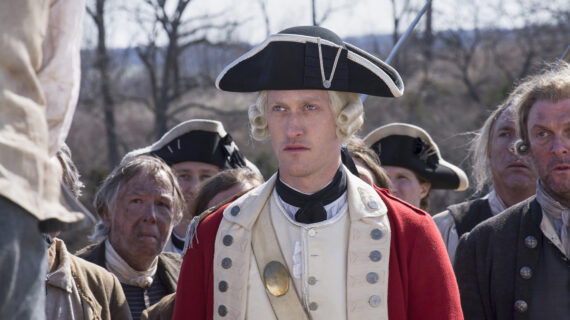
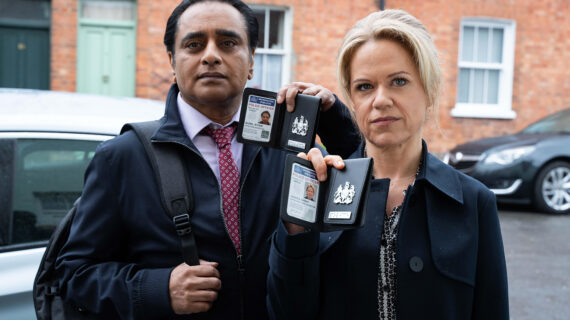
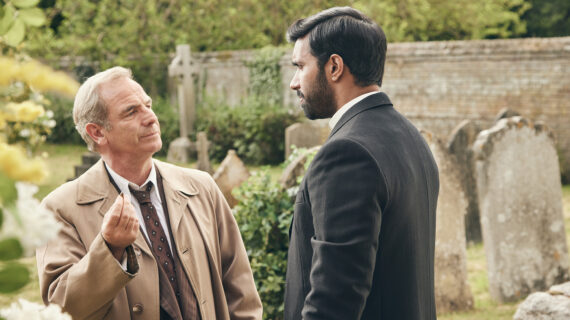
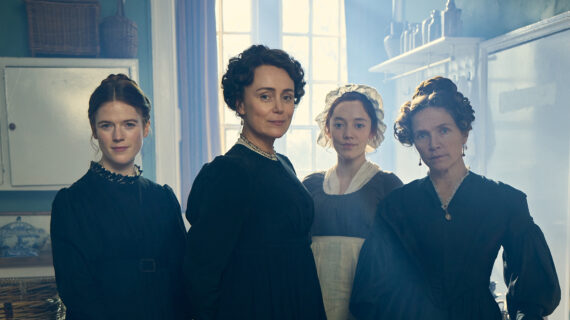
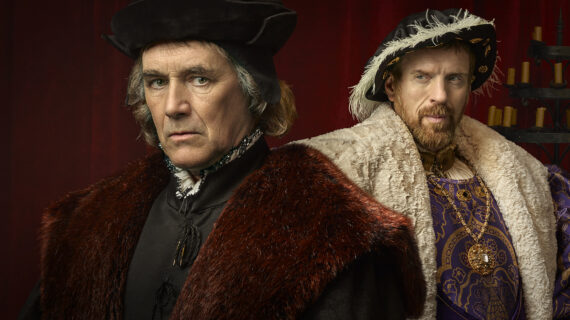
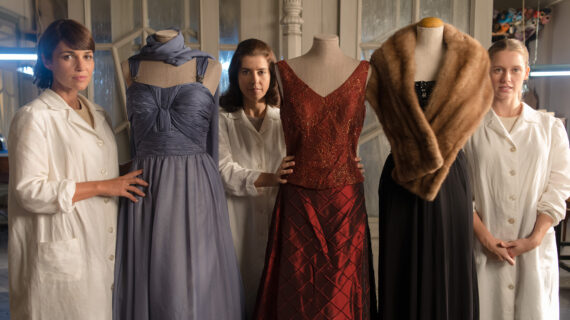
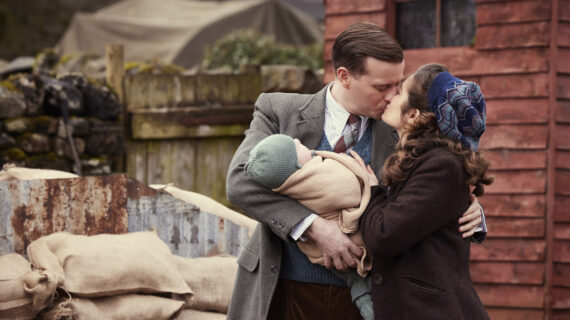
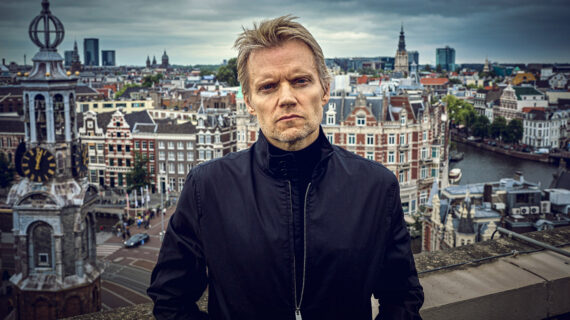
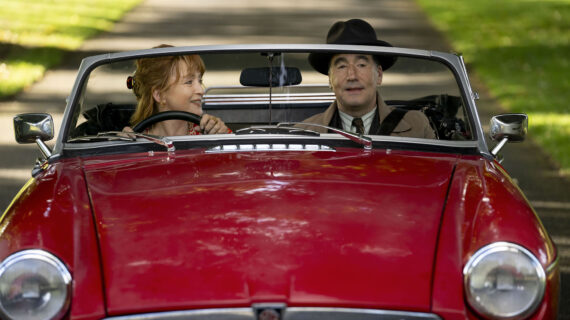
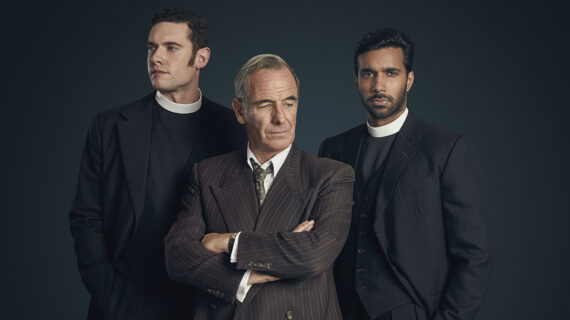
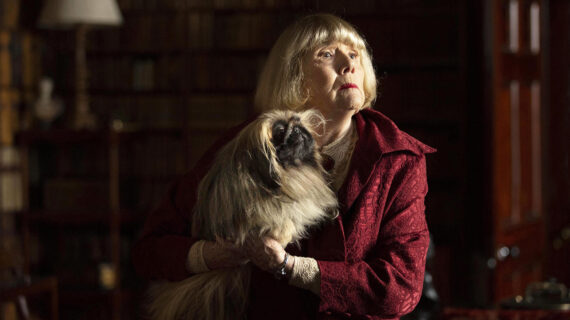

Follow Us